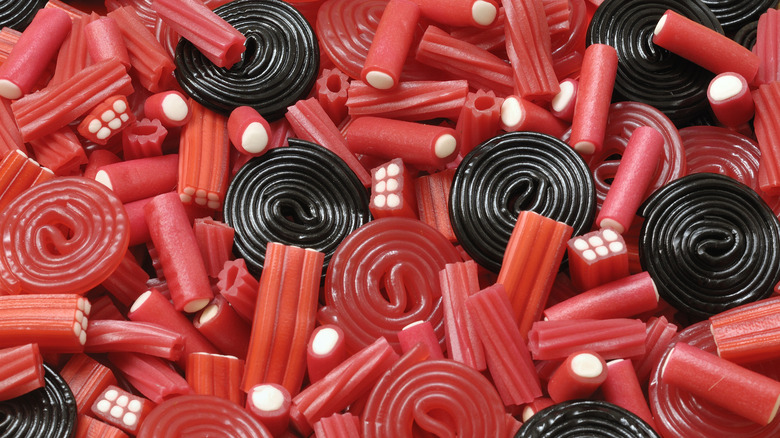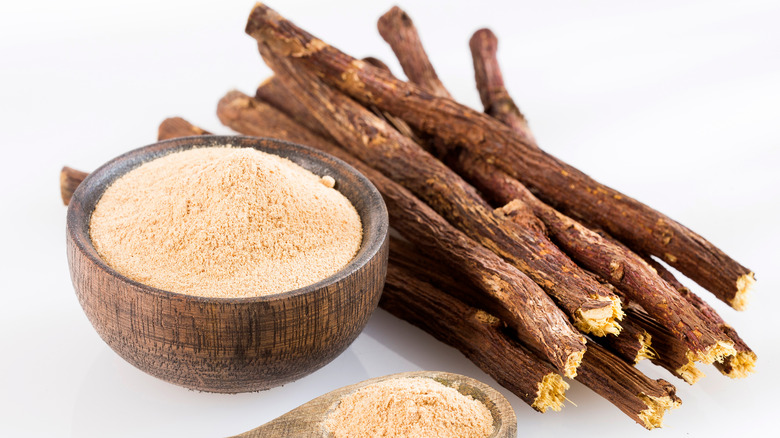Does Licorice Candy Actually Contain Real Licorice?
It's easy to forget that licorice is not just candy but also an herb (Glycyrrhiza glabra). While it's primarily grown in Mediterranean regions and the U.S. nowadays, the plant first grew in Europe's southern regions. Because some people find its bittersweet taste surprisingly delicious, it has indeed been used in the past to make candy. This is done by grounding up its root and then boiling it into juice, which can be used as a flavoring, per Encyclopedia Britannica. That's not its only use, however.
Licorice also has a long history in folk medicine, from China and Egypt to Greece and the Middle East. In those places, it was used as a remedy for digestive problems, inflammation, and upper respiratory issues. Presently, some still use it to treat bad skin, infections, and prevent cavities (via Healthline). Don't make licorice the backbone of your healthy diet, though. The U.S. Food and Drug Administration (FDA) states (via Forbes) that too much black licorice can give you an irregular heartbeat, high blood pressure, and lethargy. This is due to glycyrrhizin, the very compound that makes licorice sweet. So, moderation is key.
Does your licorice candy even really have true licorice in it, though?
Most US licorice uses aniseed oil
For those in the U.S., the answer is often "no." Instead, your licorice-flavored candy is probably actually flavored with the anise plant (Pimpinella anisum). Aniseed oil tastes similar to licorice, yet it tends to be cheaper. Other components might also be mixed in to alter the flavor or appearance of your "licorice." Plus, there's the actual base of the candy, which may be gelatin, gum arabic, or flour, per Licorice.com. While pure licorice root is edible, according to PubMed Central, it's not quite candy. So, it shouldn't come as too much of a surprise that your licorice candy isn't solely licorice. Still, to eat black licorice and think, maybe it doesn't have any licorice at all? What a twist!
What about red licorice? That's a bit of a misnomer — at least, the licorice part is. This crimson candy is usually cherry, raspberry, or strawberry-flavored. Just like black licorice, it's probably also got colorants and additional flavors, like apple, mango, or watermelon (via Licorice.com). Anecdotally, red licorice seems to be less controversial than its less vibrant counterpart. This appears to be an unfair judgment of black licorice, considering that when an American says they don't like it, they might just mean they don't like black candy flavored with aniseed oil.

